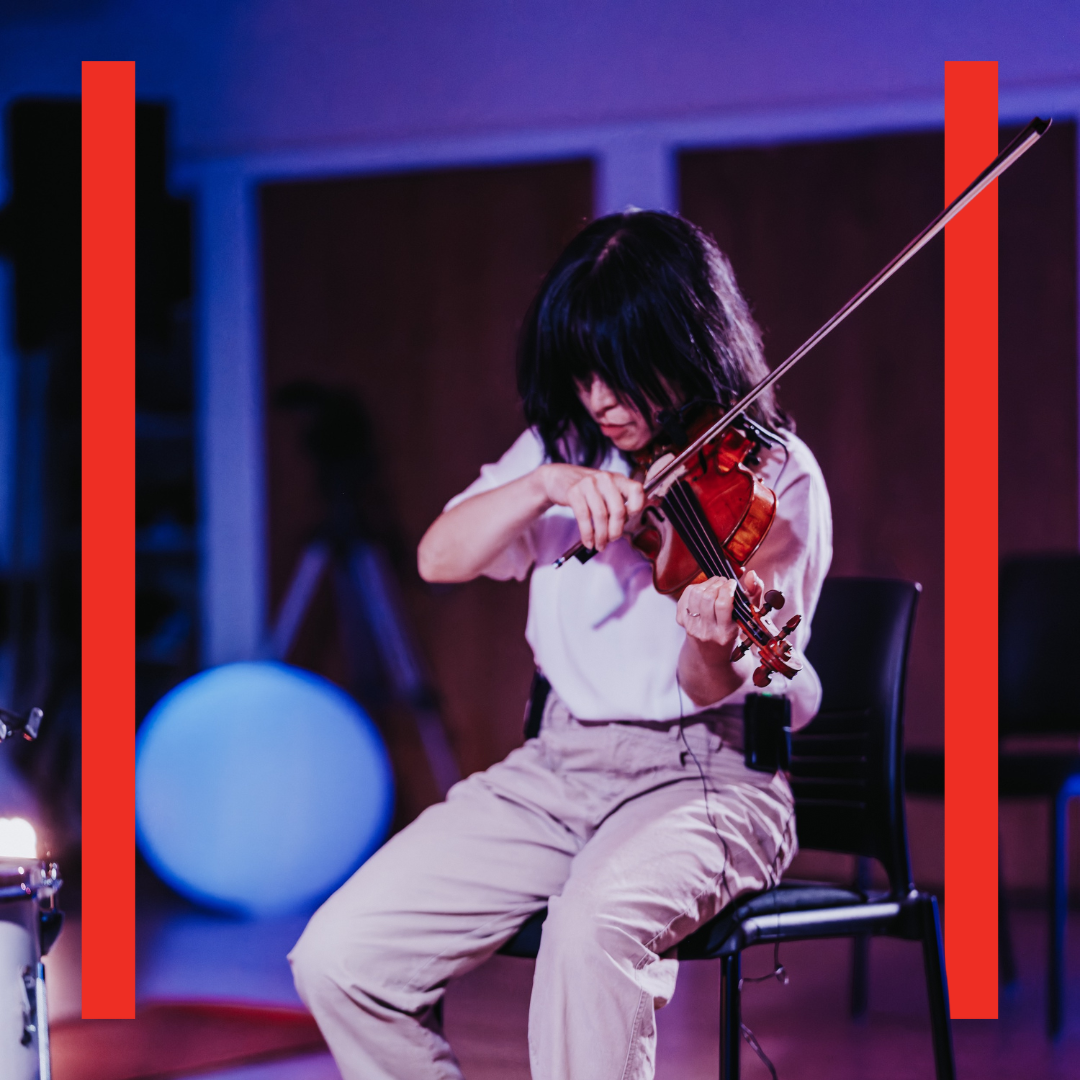
📷 by Curtis Perry
Photographed: Leslie Ting
We recently sat down with multidisciplinary artist Leslie Ting to talk about her upcoming production What Brings You In. What emerged is a raw and honest vision of the creative journey behind a performance that challenges the way we hear, connect, and heal.
“Your listening is the transformative act” is a powerful idea. What does that mean to you? How did it become central to this performance?
LT: Germaine and I talked about this recently in rehearsal – listening needs to be cultivated.
I think we’re very good at looking, and describing what we see using metaphors, but not that practiced with sound. I read an article several months ago in Harper’s about how Spotify fills playlists with “fake artists” because we’re only ”half listening anyway”. Taking advantage of the fact that people aren’t really listening, by hiring musicians (who also need the money, so still take the gig) to play as flat as possible so that people don’t start noticing and listening, in order to not pay royalties to other musicians, is incredibly chilling.
Maybe it’s easier to be in our heads where the visual mostly stays. The head has a better reputation than the body or something haha. Most of us are not really in our bodies, including myself for a long time, so I get that sound can feel overwhelming.
I’ve noticed that people only seem react to sound if it’s very specific or so visceral they can’t ignore it anymore ie. it hurts.
I cultivated listening when I was an optometrist, ironically maybe. It transformed me to develop my ability to listen closely to another person and be able to help them. Yes, it was something really practical like glasses, but people would often come in with a bit of anxiety around their eyes. Feelings have a vibration and I think there’s something really amazing, dare I say healing, that happens when you meet that vibration through listening. It becomes a form of felt presence.
The title What Brings You In evokes a therapy session. How do therapy and performance intersect for you in this work?
LT: I would say therapy and performance run parallel versus intersect.
There was always something unusual about the practice of ‘doing’ therapy that felt meaningful to work through in relation to performance. But, I would say it took six years of developing this show for me to understand that impulse. It’s very clear to me now and I think I’m clear in the show about it. YOU’LL HAVE TO COME TO THE SHOW to find out 😉
Was there a moment in your life that sparked the creation of this work? A turning point that made this performance necessary?
LT: Some combination of 40 years ago, about 20 years ago, and three years ago?
I started the violin when I was 4 and I started going to therapy when I was in my late 20s. Three years ago I really doubted whether or not I was going to land the show, meaning, I wasn’t sure if I was ever going to get it quite ‘right’. As I mentioned, it took me a while to understand why I was making this work.
I’m aware that this is a hard show to market haha – the subject matter of therapy + contemporary music… Let’s be honest, contemporary music hasn’t done a good job connecting with wider audiences, so I don’t have the greatest set-up in that sense. But, what contemporary music does require of people, that, again, we don’t pay that much attention to, is listening. There’s so much noise now, it’s important to know how to have a facility with your listening – not just focus on what you want to hear, but also go wide. Pauline Oliveros has ideas on this.
The question of this performance being necessary –
Wouldn’t I sound awfully high on myself if I said I felt everyone needed this show. 😉 What I really mean by that is that spending time on one’s listening is not just for you, but is a kind of attention and presence with others that is very powerful as a social force. Social media has really shredded some of that connection. I was aware of that when developing the online show so the main focus there was making an experience where people online felt connected to others, experiencing something at the same time.
I have a lot of awareness and respect for people breaking the inertia of the usual to come to a show like this.
We’ve taken a lot of care with the sound in the room – ‘we’ being Germaine and I as performers, and Matt Smith and Matt Rideout as Sound Designer and Audio Broadcast Engineer, respectively. This also includes the online experience over the years with Ramsey Nasser, Creative Technologist and Marie LeBlanc Flanagan, Experience Designer, and, more recently, a kind of show philosophy for the audio description that I’ve been working on with Jess Watkin, Blind and Disability Dramaturg, Kat Germain, Audio Describer, Lisa Karen Cox, Dramaturgy Consultant, and Laura Philipps, Producer.
It seems like we’re all a little overfull right now in Toronto and don’t have time to digest. I really felt this with the people who came through our installation The Violins at Nuit Blanche. Of course not everyone, but there was a pervasive feeling of consumption versus curiosity. Curiosity requires a bit of space, a bit of emptiness, a bit of stillness. So does listening well.
Can I end my response by calling my show a kind of aural laxative? Hahaha
Be sure to get your tickets to the limited run of What Brings You In before its too late!
